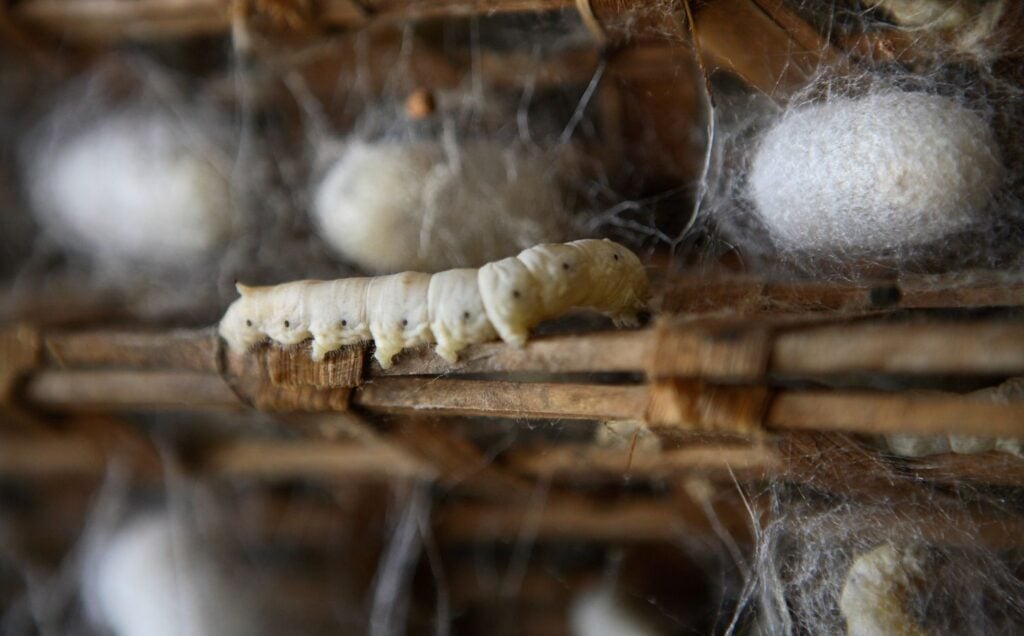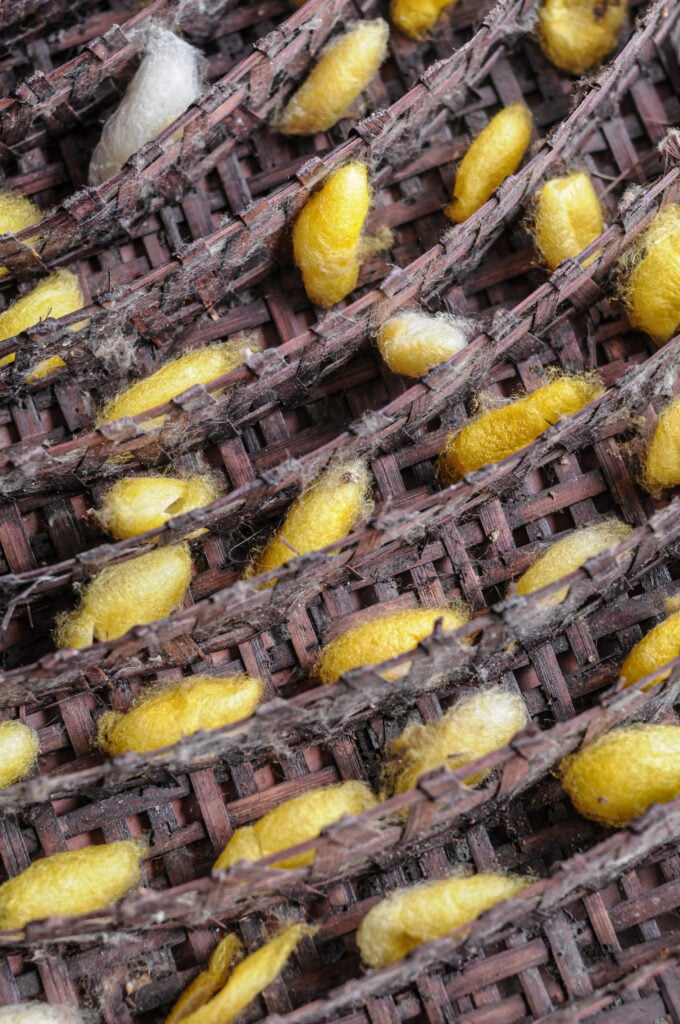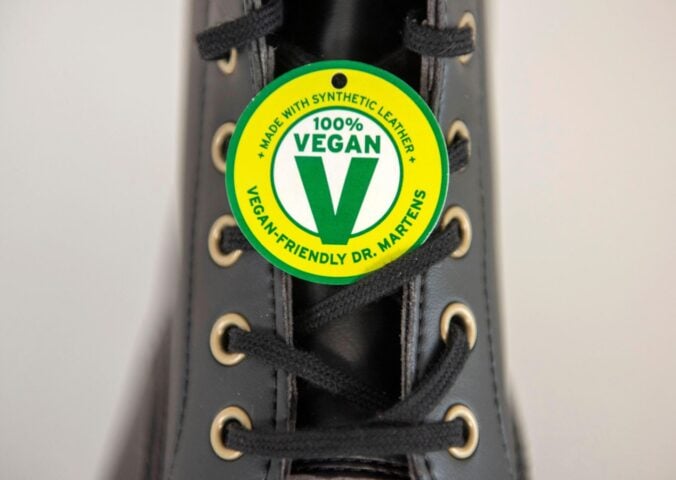Going vegan can often be a learning curve, and many people discover a wide range of products they had no idea stem from animal cruelty. Silk is a key example.
Contrary to what many people believe, veganism is more than just a diet. It’s a commitment to abstaining from contributing to all forms of animal exploitation (where possible). Silk is one of the many animal-derived materials that are not vegan-friendly.
Silk has been around for centuries, and is used to make clothes, scarves, and other accessories. It’s also been something of a trend in recent months, with a number of companies swearing by the alleged benefits of silk pillowcases. Moreover, the silk market is projected to reach between $14-18 billion by 2025.
Those tempted by silk products should be aware, however, that its production involves the killing of countless insects. Here’s everything you need to know about why silk isn’t vegan.
Why isn’t silk vegan?

Silk is produced from fiber spun by worms when they make cocoons. The industry calls them “silkworms,” and they are generally raised and bred on farms. If these worms were allowed to live out their natural lives, they would transform into moths after leaving their cocoons. On farms, however, they are killed before they get the chance.
The worms start to spin their cocoons when they are around 35 days old. They secrete liquid silk through glands on their bodies, and it hardens when it comes into contact with the air. Cocoons are made from a single thread of silk that can be up to 900 meters long. Once the worms have finished spinning and are inside, workers often extract the silk by placing the cocoon in extremely hot water to unravel them. This means that the worms are boiled alive.
Some silk farms may also use freezing, baking, or gassing as means to kill the worms and extract the silk. According to PETA, it takes 3,000 worms to make one pound of silk. It’s thought that trillions could be killed each year in the industry.
Do silkworms feel pain?

Pain is a subjective experience, and impossible to prove in any non-human animal at this point in time. While most humans are aware that dogs and cats feel pain because of their similar reactions to humans, the experience of some animals is less apparent.
Worms and other invertebrates have a very different physiology to humans, leading many people to assume they cannot feel like we do. However, they still have a brain and nervous system, and there is a great deal of scientific evidence to suggest they feel pain.
In April 2022, an evolutionary psychology professor at the University of Washington named David Parash offered the argument that animals some people deem as less intelligent – like invertebrates – could likely experience pain.
In a study titled Even Worms Feel Pain, he wrote: “Insofar as it is a crucial alarm signal, pain should be a cross-species universal, no less valuable for paramecia than for people.” He then referenced a quote in a chapter called Can They Suffer? from Richard Dawkins’ 2017 book Science in the Soul.
The quote reads: “Isn’t it plausible that an unintelligent species might need a massive wallop of pain, to drive home a lesson that we can learn with less powerful inducement?”
Environmental impact of silk
Many people may also be unaware that silk, despite being biodegradable, harms the environment too. According to the Higg Index, silk production is more damaging to the environment than almost all other fibers. Silk reportedly requires more water and generates more greenhouse gasses and pollution than a majority of other textiles (including plastic-based ones).
What are some vegan alternatives to silk?
There are a number of non-animal materials that can be used as alternatives to silk. Silk-like material can be made from pineapple, cactus, and lotus, and these have all been highlighted as more environmentally sound as well. Satin is also similar in texture and appearance, and isn’t derived from an animal source.






